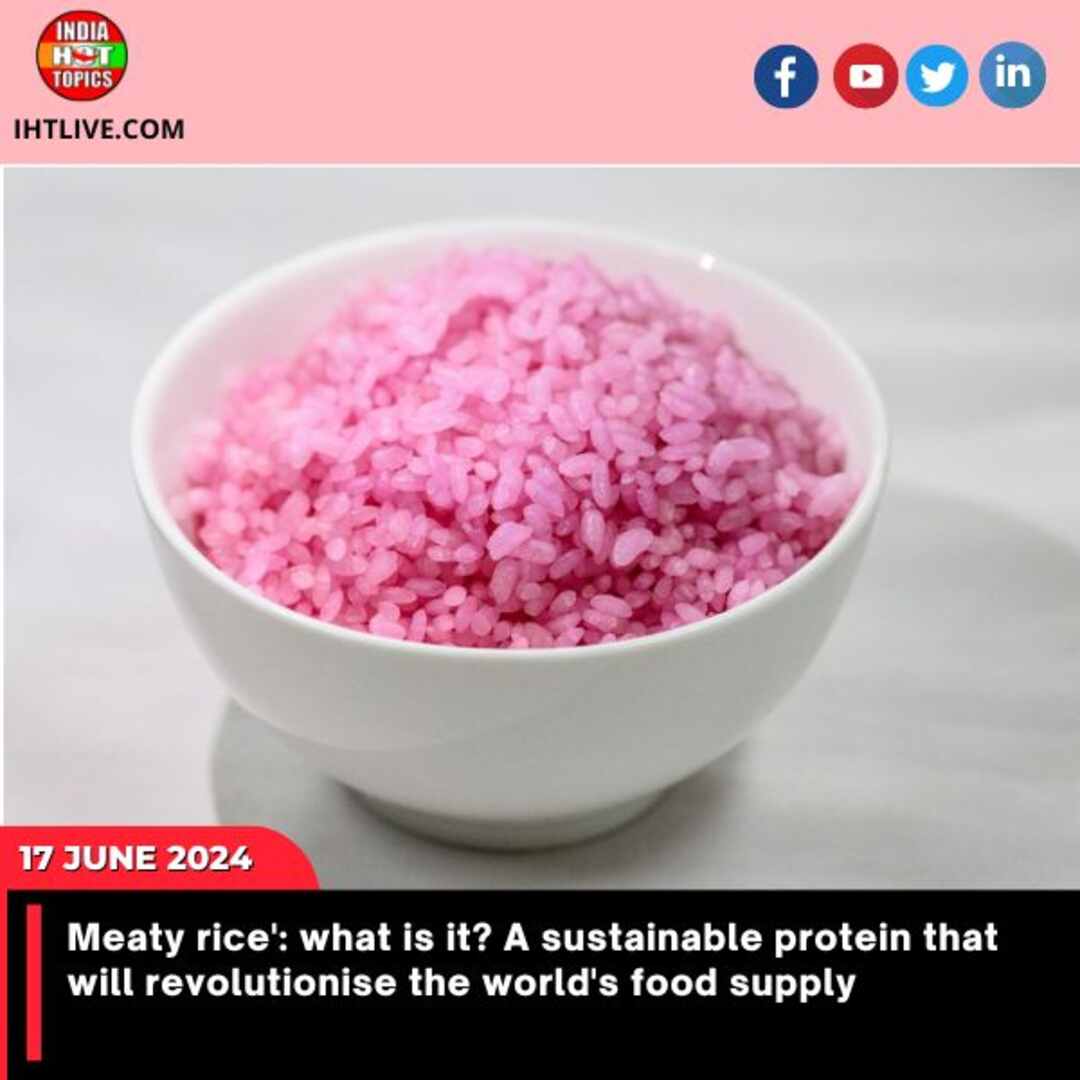Health
Can you monitor your health with a smartwatch?

Policy researcher Sneha Sinha, who works in Delhi, was recently taken aback when her wristwatch alerted her to what was described as a “abnormally high” heart rate. According to Sinha, who claimed not to have any underlying medical concerns, “I walk in high-altitude mountain regions above 15,000-16,000 feet where oxygen levels are often low.” “I attempted deep breathing in the hopes that it might help. When it continued for more than 1.5 hours, the ECG showed that atrial fibrillation (AFib) had begun. I therefore made the decision to get medical help,” she continues, adding that the physicians had called her condition a “near call.”
Smartwatches have developed past simple features like making calls and accessing the internet. They now track REM cycles while you sleep and can even measure how many calories you consume when you go out. Modern wearables are equipped with medical functions including blood-oxygen metres, AFib history optical heart sensors, built-in ECG readers, and more. According to a 2020 research that was published in JAMA Cardiology, certain wearables may even be able to produce readings that are just as reliable as conventional ECGs, which may save lives.
How is technology operated?
Smartwatches employ LEDs that flash against the skin to monitor blood flow and calculate heart rate, according to a research on the potential of ECGs that was published in Science Direct. This data is gathered by sensors and processed by computers to determine the heart’s rhythm.
Professional advice: don’t use it carelessly.
Despite the therapeutic promise of wearable technology, doctors caution against using smartwatches as a baseline for cardiovascular health.
“The ease of use and almost continuous monitoring are two advantages over’medical’ 24-hour ECG or Holter monitoring. Precision is a big restriction, despite the fact that patients may learn to monitor their own health, according to Dr. Rakesh Rai Sapra, head of cardiology at Marengo Asia Hospitals in Faridabad.
Users may utilise these gadgets to learn how to look for anomalies using the capabilities that are now available, according to Dr. DK Jhamb, SHALBY Sanar International Hospitals’ director of interventional cardiology. “At best, they serve as preliminary markers of general cardiovascular health. Smartwatches typically report a falsely low heart rate when there is an irregular pulse. See a cardiologist as soon as possible if your heart rate is too high (above 100 beats per minute) or too low (below 60).” he concludes.
Creating a starting point
To guarantee accuracy, feed precise information about your height, weight, dietary changes, and any pre- or post-surgical health-related data.
In order to understand the data being captured and any anomalies, you should always seek medical attention.
When selecting a customised exercise programme, be sure to mention any current medical concerns and pay attention to your health indicators.
Avoid making your own diagnoses and instead use your smartwatch as a guide.
General News Platform – https://ihtlive.com/
Entertainment News Platforms – anyflix.in
Construction Infrastructure and Mining News Platform – https://cimreviews.com/
Podcast Platforms – https://anyfm.in/
Health
Meaty rice’: what is it? A sustainable protein that will revolutionise the world’s food supply

Scientists from South Korea are hoping to transform global eating habits by introducing individual rice grains with grown cow cells in a tiny lab in Seoul. Team leader and professor Hong Jin-kee thinks his new so-called “meaty rice” might become an ethical and environmentally sustainable way for people to receive protein, from preventing famines to feeding astronauts in space.
The meal, which is made without using any animals, has the appearance of a typical bowl of rice (although pink), but because it contains beef muscle and fat cell culture, it has a subtle buttery scent. Hong, of Yonsei University in Seoul, stated that “we can obtain animal protein without the slaughter of livestock” by using cultured meat.
Due to environmental worries about greenhouse gas emissions from animal husbandry and ethical qualms about industrial livestock rearing, businesses all over the world have been looking to commercialize meat substitutes like plant-based or cultured meat. With a background in organoids and biomedical sciences, Hong decided to focus his research on rice because it’s the most popular grain in Asia for protein.
Currently, this can be a laborious process: a typical rice grain is individually injected with beef cells, coated with fish gelatin to aid in adhesion, and then cultivated in a petri dish for up to 11 days. According to Hong, rice has a “slightly porous structure,” and after the beef cells are injected, the grain provides “an ideal structure for cells to grow uniformly from the inside out”.
carbon footprint
Compared to ordinary rice, Hong’s “meaty” rice has 7% more fat and 8% more protein. Although Hong and his colleagues are still figuring out how to scale the procedure, he intends to have their invention certified as emergency relief food for two African nations. “For those who are limited to… just one meal a day, a slight increase in (protein content), even by just a few percent, becomes incredibly important,” he stated.
Although it hasn’t authorised any meat that has been grown for human consumption, South Korea declared in 2022 that it would invest millions of dollars in a “foodtech” fund and designated cell-cultured meat as a top research priority. Singapore and the United States sell meat that has been raised. but Italy banned it last year citing a need to safeguard its livestock industry. Some scholars say potential ethical concerns with cultured meat include the sourcing of the initial animal cells.
It’s hard to be “certain about the safety of the serum used in culture media, and the antibiotics and hormones added during the culturing process” , Former Seoul National University emeritus professor Choi Yoon-jae,
By removing the need to produce and farm animals, Hong’s team’s hybrid rice approach greatly reduces the carbon footprint of protein. He calculates that it releases 6.27 kilogrammes (13.8 pounds) of carbon dioxide for every 100 grammes (3.5 ounces) of protein produced, which is eight times less than standard beef production.
Would you consume it?
According to Neil Stephens, a technology and society lecturer at the University of Birmingham, cultured meat has long been “presented as a climate solution compared to traditional livestock”. However, he pointed out that the industry faces difficulties, such as the requirement to be “produced at scale, and cheap, with low energy needs and environmentally friendly inputs,”
“The ‘meaty’ rice might have an advantage over some other cultured meat products” , because it’s a hybrid item that involves “mixing animal cells with plant material — the rice — making cheaper and less energy intensive,” he stated. Nevertheless, it would still need to persuade people to eat it and demonstrate its environmental merits on a large scale. Both could provide difficulties.”
By 2040, only 40% of the world’s meat consumption would come from conventional sources, according to global firm AT Kearney, upending the whole meat sector. According to a 2019 article, “Products such as milk, egg white, gelatin, and fish can be created with similar technology.” Hong is adamant that biotechnology has the power to improve human nutrition consumption.
For instance, he explained, eating lab-grown beef made exclusively of muscle cells rather than fat could help an elderly person suffering from sarcopenia, or muscle loss. He stated that “more biological information becomes available and we need to meticulously control our food” as a new era approaches.
He added that this might imply that a future AI-infused kitchen could assess a person’s health through a blood analysis, then instruct a robot to prepare the most suitable breakfast.
General News Platform – https://ihtlive.com/
Entertainment News Platforms – anyflix.in
Construction Infrastructure and Mining News Platform – https://cimreviews.com/
Podcast Platforms – https://anyfm.in/
Health
World Blood Donor Day 2024: 5 reasons to give blood and information about its health advantages

World Blood Donor Day 2024: Donating blood is a noble task, and it also comes with multiple health benefits. Blood transfusion is done to treat multiple health disorders such as anemia, cancer, etc. People are urged to donate healthy blood as it helps in a steady supply of blood for the healthcare industry. Every year, World Blood Donor Day is celebrated on June 14 to establish the importance of donating blood and how it helps in patient treatment. However, donating blood is a double bonanza–it helps the one donating blood, as well as the one receiving it. As we celebrate the important day today, here are a few things that we should know.
Unexpected health advantages of blood donation:
Promotes heart health:
The act of giving blood improves cardiovascular health. It also lessens blood viscosity, which helps to lower the risk of strokes and heart attacks. Donating blood contributes to maintaining a healthy blood supply, which lessens cardiac strain.
decreases iron stores:
Hemochromatosis, a disorder that can harm organs like the liver and heart, is brought on by an excessive amount of iron in the blood. Regular blood donation reduces extra iron, which is beneficial to general health.
Creation of new blood cells:
The body attempts to make up for blood lost after donating. This promotes the body’s ability to create new cells and carry out tasks efficiently in addition to aiding in the development of new blood cells.
Free health screening:
It is required to undergo a basic health examination, which includes measuring blood pressure, body temperature, pulse, and haemoglobin levels, prior to donating blood. This can assist us in better understanding our bodies and, if necessary, addressing any health issues that may arise.
enhances mental health
We get a psychological lift and feel better when we know that the blood we have donated may save a life or aid someone in need.
General News Platform – https://ihtlive.com/
Entertainment News Platforms – anyflix.in
Construction Infrastructure and Mining News Platform – https://cimreviews.com/
Podcast Platforms – https://anyfm.in/
Health
Women are more vulnerable than men to gonorrhea due to rising antibiotic resistance.

Don’t engage in sexual activity. It is “the only way to completely avoid STIs,” according to public health organizations. Avoid engaging in any oral, anal, or vaginal sex.
It is a sobering piece of wisdom. However, it also makes perfect sense when you look at the most recent data on the spread of antimicrobial resistance (AMR) and bacterial STIs, such as gonorrhea, from the European Centre for Disease Prevention and Control (ECDC).
Antibiotics including azithromycin, ceftriaxone, and cefixime are frequently used in medicine to treat gonorrhea, but their efficacy is declining. And that might be a factor in the rise in gonorrhea infections and STI cases in general throughout Europe, if not the world.
In a study released on June 10, 2024, the ECDC stated that there were 70,881 confirmed cases of gonorrhea in 28 EU/EEA (European Union/European Economic Area) nations in 2022, a 48% increase from the previous year.
AMR is one reason why antibiotics across the board — whether it’s for STIs or an earache — are failing public health efforts. Either we use them too much, or we don’t bother to take all the pills, with the result that bacteria are able to build up a resistance to many of our “go-to” drugs of the past 100 years.
Gonorrhea: What is it?
The Neisseria gonorrhoea bacteria is the cause of gonorrhea. It may impact the esophagus, rectum, or genitalia. Infections are common in young persons (ages 15 to 24).
Women are more likely than males to get an infection since diagnosis is more difficult for them. Women also frequently don’t have symptoms, and when they do, they are typically minor and can be confused for another vaginal or bladder infection. particularly expectant mothers, who may transmit STI infections to their fetus. Undiagnosed sexually transmitted infections can cause pregnancy problems in women or cause infertility.
However, men do experience symptoms, such as painful or enlarged testicles, a burning feeling when peeing, and a discharge that can be white, yellow, or green.
However, this is less common in women than it is in them. Teodora Elvira Wi, who oversees the global HIV, hepatitis, and STI programs at the World Health Organization in Geneva, stated that women must be given priority because they are asymptomatic.
“We need opportunities for women to be screened for STIs, and especially people at higher risk, people who have multiple partners and sexually active adolescents,” stated Wi.
‘Concerning’ antimicrobial resistance to popular medications for gonorrhea
In the ECDC paper, 4,396 gonorrhea samples (also known as “isolates”) from 23 different nations were analyzed. These samples were taken in 2022.
They discovered that “isolates resistant to azithromycin increased significantly to 25.6%, compared to 14.2% in 2021.”
Since azithromycin and ceftriaxone are frequently used together, the ECDC deemed this result to be “particularly concerning.”
Ciprofloxacin resistance rose as well, though not as dramatically: in 2022, 65.9% of isolates showed resistance, up from 62.8% in 2021.
Cefixime resistance remained “low at 0.3%.”
All things considered, the World Health Organization’s data from other regions—Africa and Asia, for example—reflects the ECDC figures.
According to Wi, 73 countries worldwide have reported antimicrobial resistance data in gonorrhea. “Antimicrobial resistance is not the only cause [there], but in countries where antimicrobial resistance is even higher than in Europe, it is contributing to the increase in bacterial STIs,” Wi added.
Pharyngeal (throat) gonorrhea was on the rise in 2022, according to ECDC data, although genital and anorectal gonorrhea cases stayed steady.
How to reduce STI transmission
According to WHO data from 2020, 374 million new cases of syphilis, gonorrhea, chlamydia, and trichomoniasis among individuals aged 15 to 49 occur worldwide each year. The increasing incidence of STI cases was attributed by the WHO to the following factors:
An increase in risky sexual conduct, such as the usage of fewer condoms and a rise in the number of casual and committed relationships
Socioeconomic factors and asymptomatic infections; biological considerations
Due to underfunding of services, there is a paucity of STI services, poor access to STI services, and a shortage of diagnostic test instruments.
Stigma: As a result of stigma, STI services and research are underfunded, and patients are less likely to seek treatment.
In public health initiatives to limit STIs, addressing and/or reversing these variables would be a smart place to start.
Wi advised against quitting entirely, saying that having sex should be accompanied by education. “Have sex, have pleasure in sex, make it a voluntary thing, do it for your sexual well-being and protect yourself the way you protect yourself from other infections,” she stated.
General News Platform – https://ihtlive.com/
Entertainment News Platforms – anyflix.in
Construction Infrastructure and Mining News Platform – https://cimreviews.com/
Podcast Platforms – https://anyfm.in/
-

 India8 months ago
India8 months agoThe afternoon briefing revealed that 97.26% of the ₹2000 notes were returned, and the Israeli Prime Minister committed to war goals.
-

 Business1 year ago
Business1 year agoSrikanth Venkatachari is appointed as the new chief financial officer by Reliance Industries.
-

 Entertainment1 year ago
Entertainment1 year agoNew Season 8 The Walking Dead trailer flashes forward in time
-

 India1 year ago
India1 year agoPM Modi’s Three-Nation Tour Begins with a Traditional Welcome in Papua New Guinea
-

 Fashion7 years ago
Fashion7 years agoThese ’90s fashion trends are making a comeback in 2017
-

 India Hot Topics12 months ago
India Hot Topics12 months agoCenter ‘busts’ 8 YouTube channels for distributing false information.
-

 Business7 years ago
Business7 years agoThe 9 worst mistakes you can ever make at work
-

 India1 year ago
India1 year ago3 Vande Bharat Trains, An E-way: MP’s Infra, Connectivity Projects on Fast Track ahead of Assembly Polls







